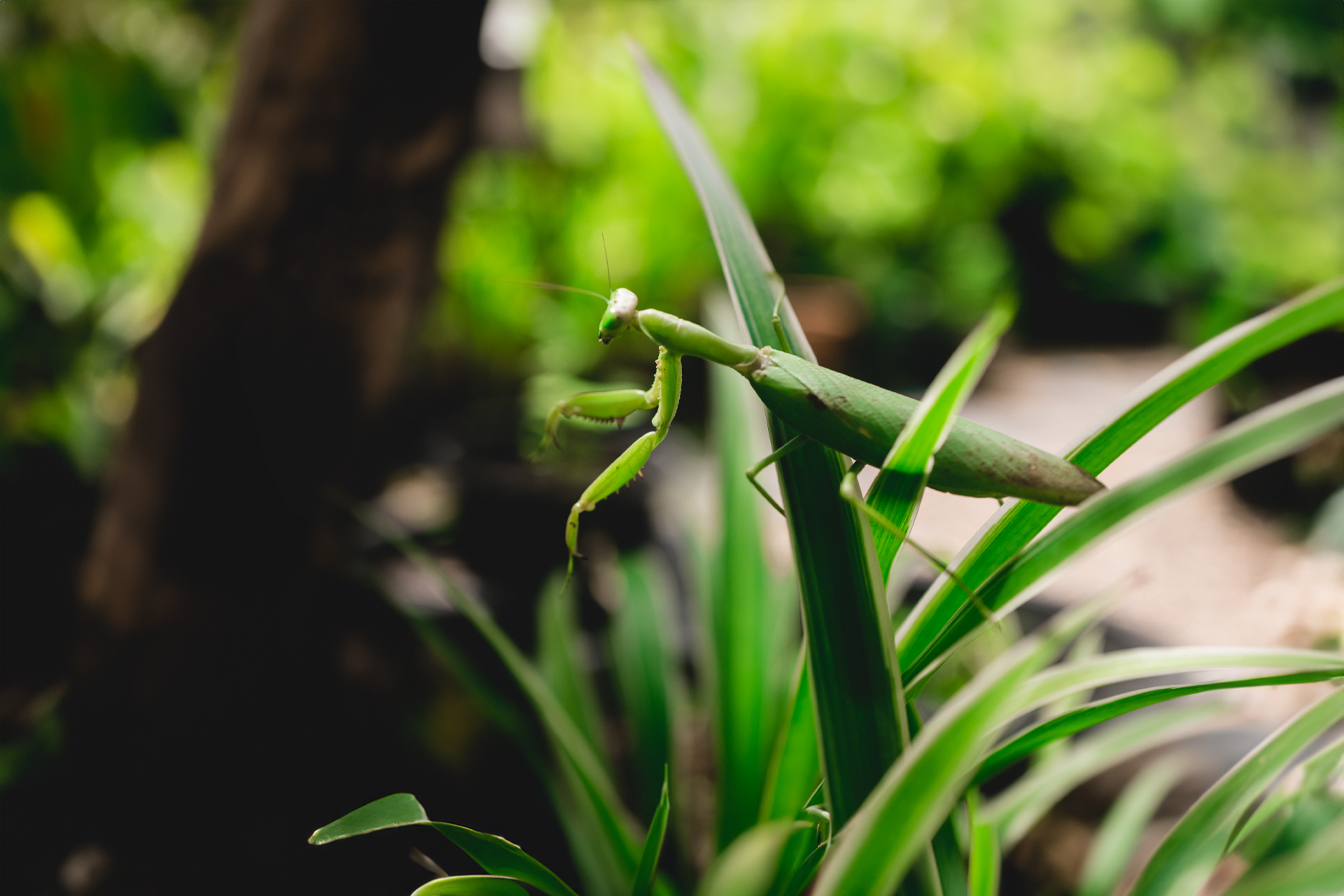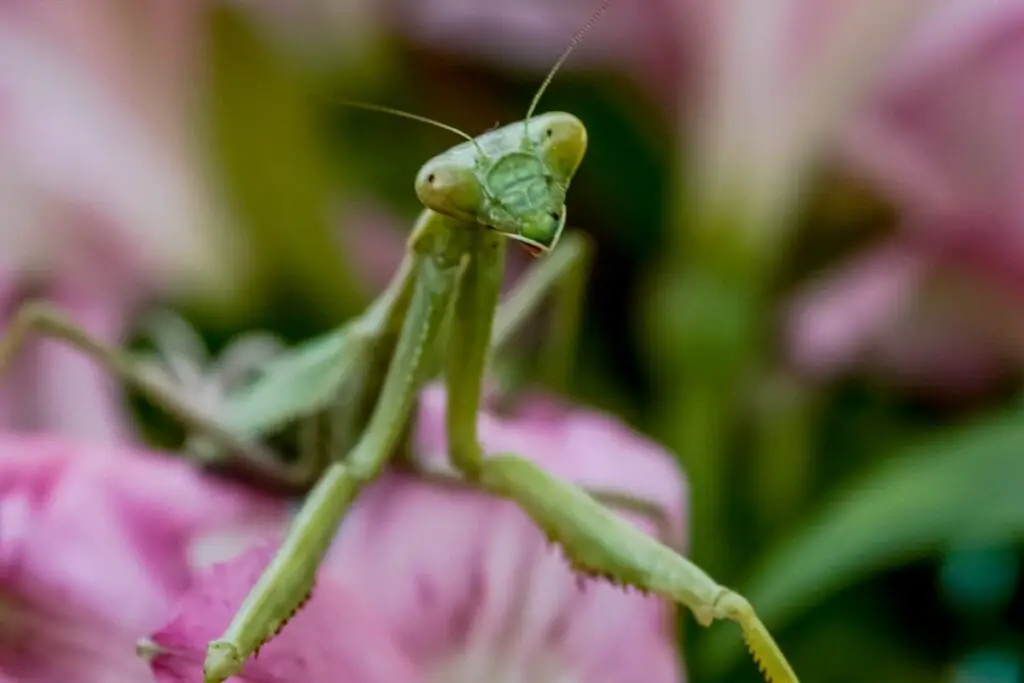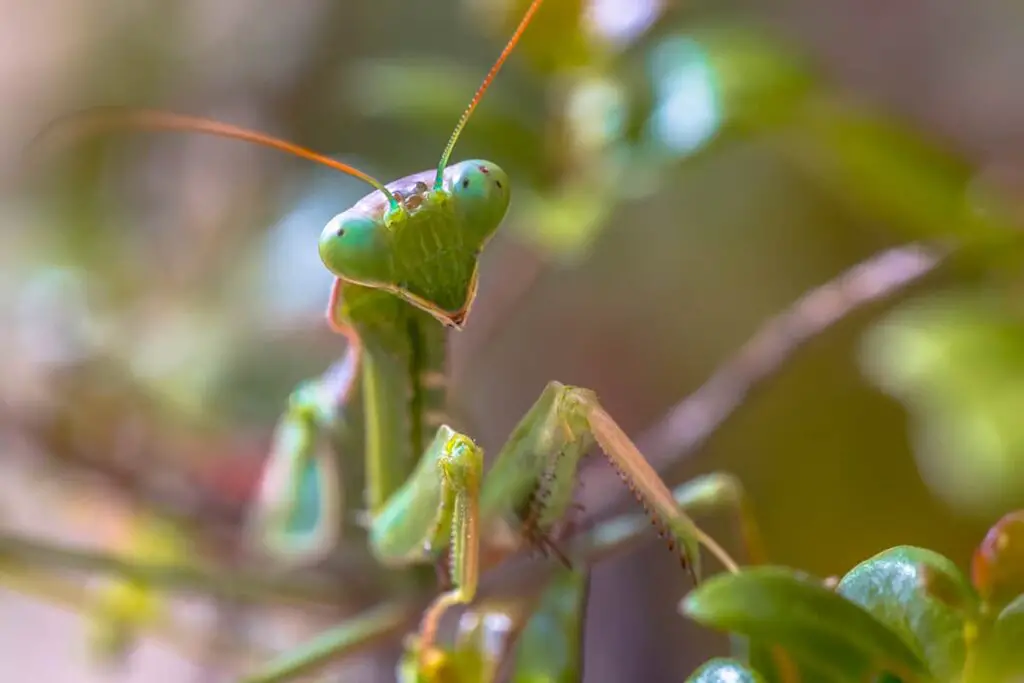
If you’ve ever come across a praying mantis in your garden, you might have noticed that these intriguing insects can remain astonishingly still, staying in one position for an extended period. This behavior might seem puzzling, but it has a purpose. When a praying mantis stays stationary, it’s usually part of a hunting strategy. These carnivorous insects are ambush predators, meaning they wait for their prey to come within striking distance before making their move.
Their stillness is aided by their impressive camouflage, which allows them to blend in with their surroundings. This makes it hard for both prey and predators to spot them. When they remain motionless, praying mantises conserve energy, which is particularly important considering their sit-and-wait approach to catching food. This energy conservation coupled with their predatory efficiency is what enables them to survive in the wild.
Additionally, during certain times in their life cycle, such as during molting when they shed their exoskeleton to grow, praying mantises will stay in one spot due to vulnerability. During this time, movement can be risky, so staying still is the best defense against potential threats. Understanding these reasons can give you a fascinating insight into the world of these quiet hunters.
Praying Mantis Behavior
You might be curious why a praying mantis can remain motionless in one spot for extended periods. It’s intriguing to learn that this behavior is central to their survival tactics, involving a calculated predatory strategy and effective energy conservation.
Predatory Strategy
The praying mantis is a master of stillness, often camouflaging itself within its environment to ambush prey. When prey is within reach, the mantis strikes with lightning speed. Observations suggest they can maintain this stillness, sometimes for days, to optimize their hunting efficiency, reducing the risk of detection by both predators and prospective prey.
Energy Conservation
Remaining stationary is also part of a praying mantis’s energy-saving approach. Through minimal movement, they conserve vital energy, which is especially important as cold-blooded insects dependent on the ambient environment for regulating body heat. Conserving energy allows them to survive when food is scarce and to invest more resources in reproduction and growth.
Environmental Factors
In considering why a praying mantis might remain stationary for extended periods, environmental factors such as climate and food sources play pivotal roles. These factors can greatly influence the mantis’s behavior.
Temperature and Climate
Temperature affects the praying mantis significantly, as these are ectothermic creatures relying on external heat sources to regulate their body temperature. In cooler climates or during colder periods, praying mantises may become less active and remain in one spot for longer to conserve energy. On the flip side, when it’s warm, they might be more inclined to move about.
Food Availability
The availability of food sources can dictate a praying mantis’s decision to stay put. When prey is abundant, a mantis might choose to stay in an ideal hunting spot, taking advantage of the situation without needing to move. Conversely, when prey is scarce, they may still wait patiently, adopting an ambush tactic to conserve energy until an unsuspecting victim comes along.
Physiological Reasons
When you observe a praying mantis staying motionless in one spot for days, it’s often due to specific physiological needs related to their life cycle.
Molting Process
The molting process is a critical stage in the development of a praying mantis. During this time, they need to remain still to conserve energy and allow the new exoskeleton to harden. The process is energy-intensive, and movement can be risky before the new layer solidifies, which explains why a mantis might choose to be stationary.
Reproductive Behavior
Furthermore, reproductive behavior can influence a praying mantis to stay in one place. Females often remain in one spot to emit pheromones to attract males. By staying still, they ensure their scent is stronger and can be detected by potential mates from a distance. This behavior maximizes their chances of reproductive success.
Frequently Asked Questions
In exploring the unique habits of praying mantises, you might wonder why they sometimes choose to remain motionless for days. Here, you’ll find specific insights into your questions about their fascinating behaviors.
What could be the reasons for a praying mantis to remain stationary for extended periods?
A praying mantis may stay in one spot for long durations primarily to ambush prey. This tactic makes them less detectable to both predators and potential prey, improving their chance of survival and successful hunting.
How does remaining in one place benefit a praying mantis in its natural behavior?
By staying still, a praying mantis is able to camouflage itself within its environment. This stillness is an essential part of their predatory strategy, allowing them to surprisingly catch unsuspecting prey.
Could environmental factors influence a praying mantis’s decision to stay in one spot?
Yes, environmental conditions like temperature and humidity can affect a praying mantis’s activity levels. Cooler temperatures may reduce metabolic rates, resulting in prolonged periods of inactivity.
What are the typical behaviors of praying mantises when they are not moving for days?
When not moving, praying mantises engage in activities like molting, resting, or waiting for prey. They have the ability to stay motionless for extended periods, which is normal and a part of their natural behavior.
Is it normal for a praying mantis to lay down and not move, and what might this indicate?
It is unusual for a praying mantis to lay down as they typically remain upright. However, a praying mantis might be still if it is about to molt or if it is experiencing health issues.
How does remaining stationary play into the praying mantis’s hunting strategy?
Stillness is a critical component of the praying mantis’s hunting strategy. They wait for prey to approach within striking distance, then attack swiftly with their powerful front limbs.
Driven by a passion for those tiny creatures that rule our world, we at Bug Domain strive to be your go-to resource for information on insects.




